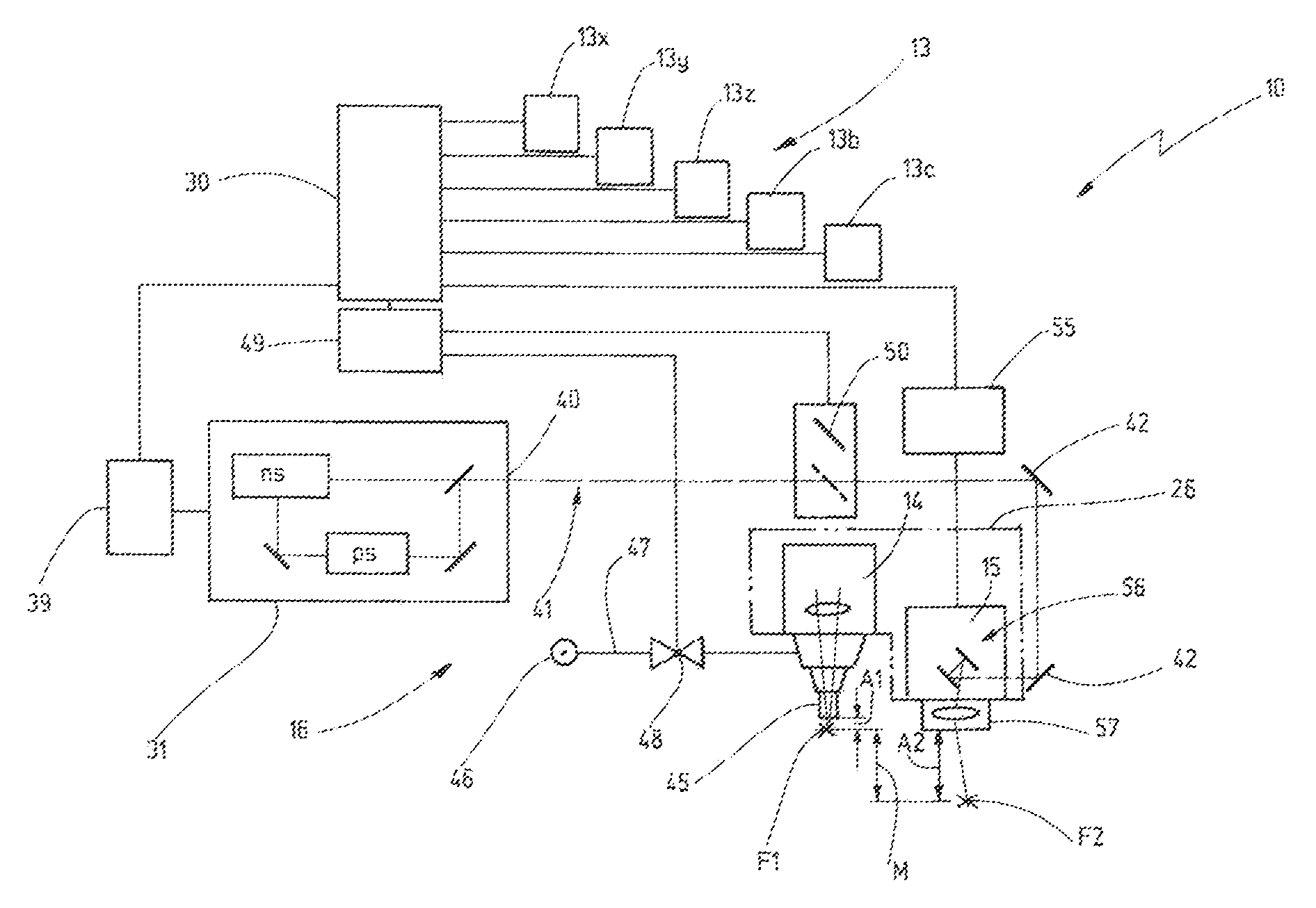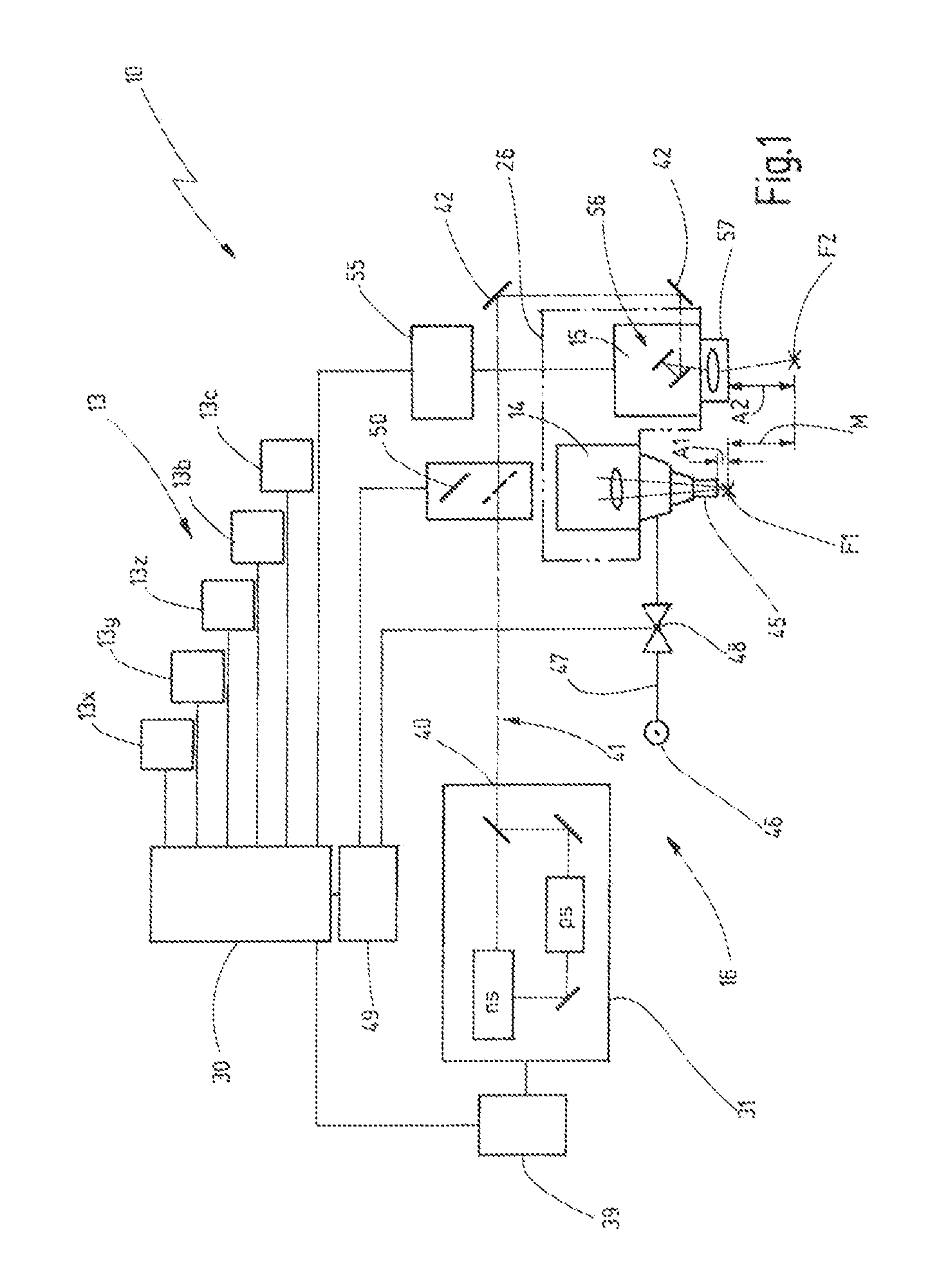Laser machining apparatus with switchable laser system and laser machining method
a laser system and laser machining technology, applied in metal working equipment, welding equipment, metal-working equipment, etc., can solve the problems of insufficient time of laser pulse action on workpieces, negative effect on cutting tools, and workpiece thermally affected zones, etc., to achieve high-quality machined workpieces.
- Summary
- Abstract
- Description
- Claims
- Application Information
AI Technical Summary
Benefits of technology
Problems solved by technology
Method used
Image
Examples
Embodiment Construction
[0022]FIGS. 1 and 2 show an exemplary embodiment of a laser machining apparatus 10 for machining a workpiece 11 with laser pulses. The laser machining apparatus 10 comprises a holder 12 for holding or mounting the workpiece 11. In accordance with the exemplary embodiment it is possible, via five infeed axes 13, to move and / or position the holding means 12 or the workpiece 11 relative to a first laser head 14 and a second laser head 15 of a laser arrangement 16. The number of infeed axes 13 may also vary as a function of the desired machining of the workpiece 11. Up to six infeed axes 13 may be provided.
[0023]In the exemplary embodiment, some of the infeed axes 13 are embodied as a linear guide and some as a circular guide. The first linear guide 13x comprises a carriage 17 that can be moved linearly in X-direction, said carriage—in the exemplary embodiment—being supported from the top on a first rail 18 and being supported on said rail, as well as on a second rail 19 parallel theret...
PUM
| Property | Measurement | Unit |
|---|---|---|
| power | aaaaa | aaaaa |
| power | aaaaa | aaaaa |
| power | aaaaa | aaaaa |
Abstract
Description
Claims
Application Information
 Login to View More
Login to View More - R&D
- Intellectual Property
- Life Sciences
- Materials
- Tech Scout
- Unparalleled Data Quality
- Higher Quality Content
- 60% Fewer Hallucinations
Browse by: Latest US Patents, China's latest patents, Technical Efficacy Thesaurus, Application Domain, Technology Topic, Popular Technical Reports.
© 2025 PatSnap. All rights reserved.Legal|Privacy policy|Modern Slavery Act Transparency Statement|Sitemap|About US| Contact US: help@patsnap.com



